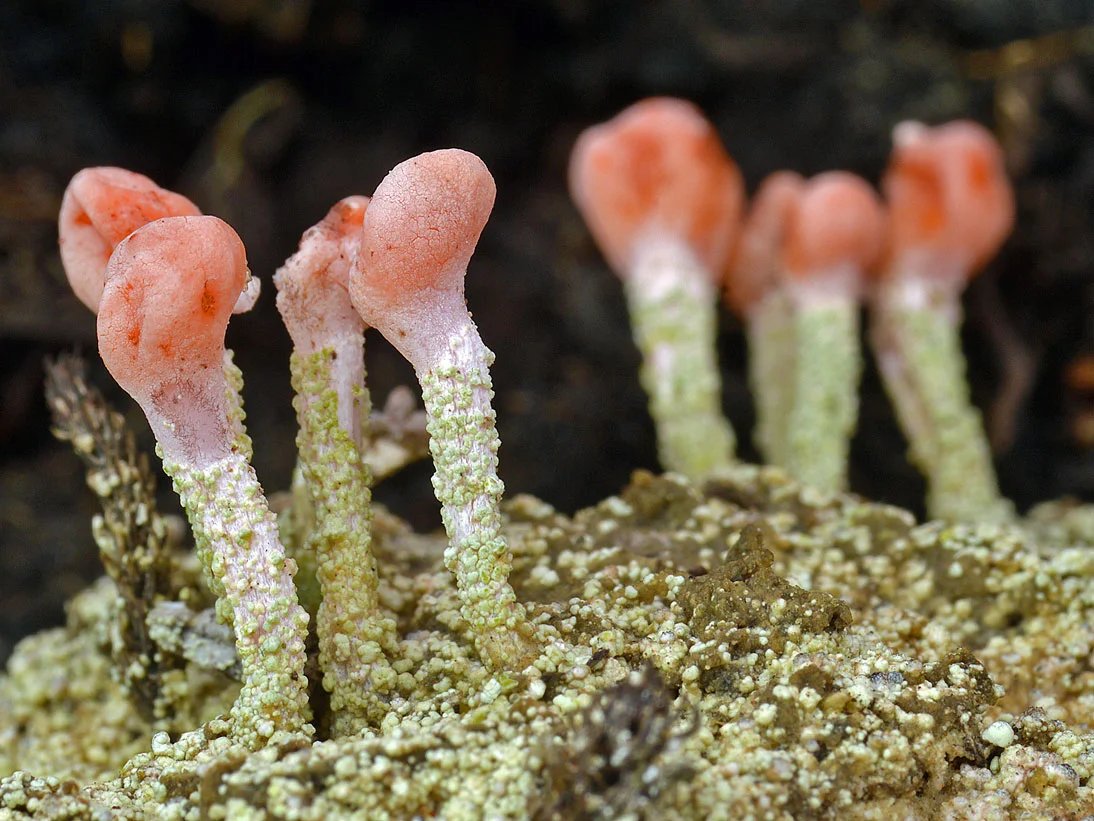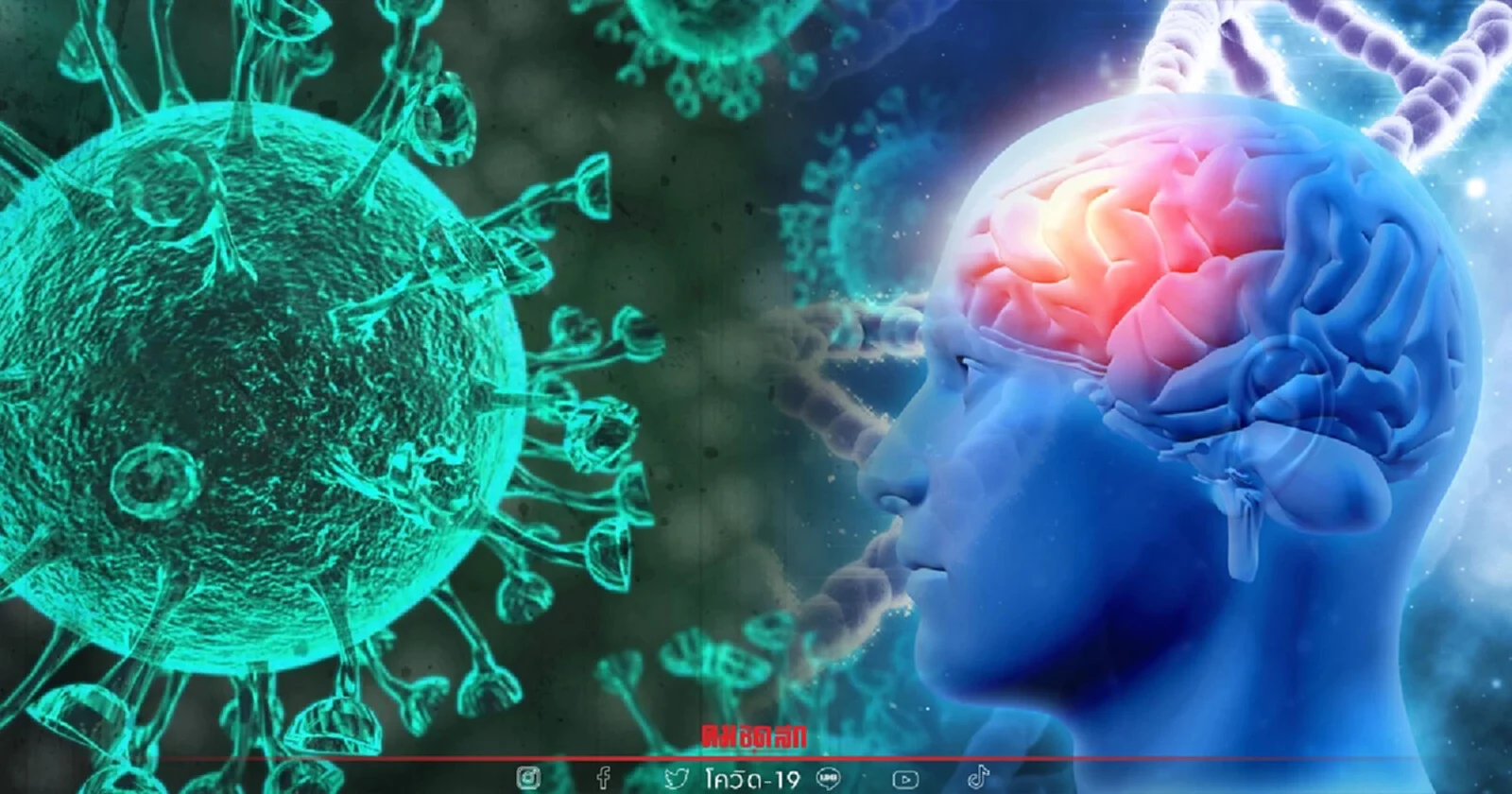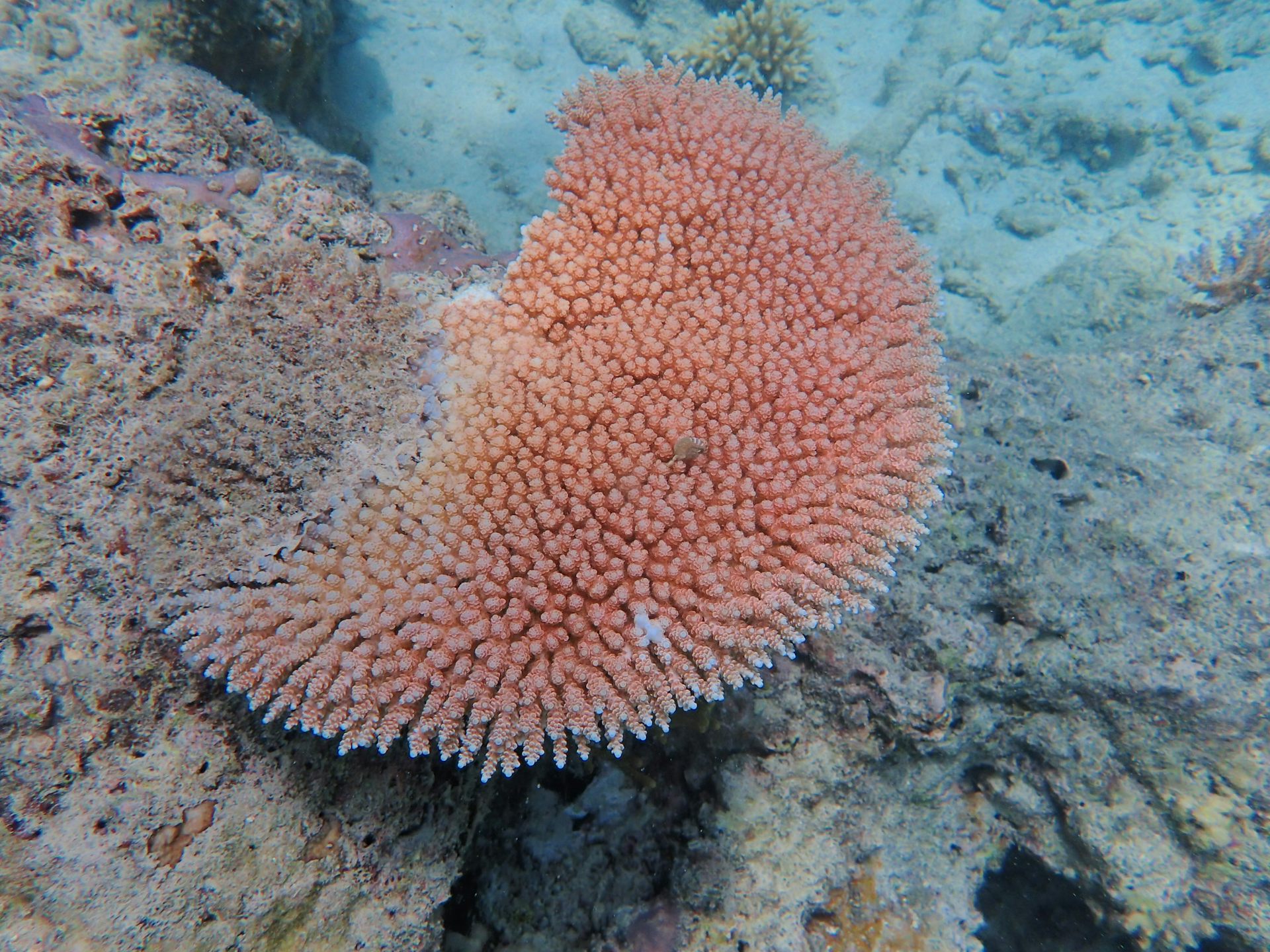Religion, Creationism, evolution, science and politics from a centre-left atheist humanist. The blog religious frauds tell lies about.
Tuesday, 16 August 2022
Evolution News - How Fungi Got Their Diverse Shapes
Scientists from Bristol University, UK, have shown that the current diversity in the shape of fungi was the result of bursts of evolutionary radiation, following increases in multicellular complexity.
Creationists will need to ignore the fact that this explanation shows how the Theory of Evolution is fundamental to understanding biodiversity, in complete contrast to what their reality-denying disinformation sources have been claiming for the last half century.
Sadly, the team's published paper in Nature Ecology & Evolution is behind an expensive paywall, but the Bristol University press release explains their method and basic findings:
Monday, 15 August 2022
Creationism - A Notion In Crisis - Now Its Human Evolution by LOSS of Complexity!
Question - How can you tell it's time to ditch a daft idea?
Answer - When its basic claims keep being refuted by science.
This is the problem, Creation Inc. (No donation too large; give till it hurts!) is now facing, as yet another basic axiom is refuted by scientific observation. To make matters worse for them, scientists led by researchers from Kyoto University, Japan, who discovered this latest refutation of Creationism, had no intention of doing so. Their intention was to reveal another factoid in the story of human evolution and, as so often, that factoid just happens to refute a basic Creationist claim.
Saturday, 13 August 2022
Malevolent Designer News - Medical Science Has Presented Creationism's Malevolent Designer with a New Challenge

It's a basic axiom of intelligent [sic] design creationism that evolution doesn't happen, so all change is the intentional design of a single creator (because, although they deny it's religion in disguise, the designer has to comply with basic Christian dogma, too, including a single creator god).
It that were true, news from the American Chemical Society, of a new drug that is proving to be effective against multiple drug-resistant bacteria, is a new challenge for Creationism's divine malevolence. It has been working hard, ever since the discovery of penicillin, to design ways in which its pathogens can continue to make us sick, by making them resistant to it and then to every other new antibiotic, in an arms race that looks exactly like the sort of evolutionary arms race that the Theory of Evolution by Natural Selection predicts.
Of course, Creation Inc. (no donation too large) has devised all manner of convoluted mental gymnastics for its followers to use to explain this apparent mendacity away and to portray the designer of these pathogens and their resistance as something else, because the real creator is infinitely benevolent and would like nothing better than having us all healthy and happy. The excuse usually includes blaming the victim or his/her ancestor/family, or humanity as a whole, or something someone once did thousands of years ago according to religious superstitions, while still pretending this is a scientific explanation, so ID creationism is real science, which should be taught to school children in science class at tax-payer's expense.
So, what exactly is this new drug and how does it work? The American Chemical Society (ACS) news release explains:
Thursday, 11 August 2022
Another Bible Blooper Exposed by Science.

And God made two great lights; the greater light to rule the day, and the lesser light to rule the night: he made the stars also. And God set them in the firmament of the heaven to give light upon the earth, And to rule over the day and over the night, and to divide the light from the darkness: and God saw that it was good.
And the evening and the morning were the fourth day.
Genesis 1:16-19
The problem these cultists have is that science continually and consistently proves this, and much else in the Bible, wrong - which is embarrassing for words of the supposed creator of it. Sadly, for them, it can't even be passed off as an allegory or a metaphor - the usual excuse when the Bible describes something that isn't so - because there is nothing that can be represented as a firmament to which the sun and moon are fixed, and the moon can't even be represented as a lamp, since a lamp has its own light, and the moon doesn't. Nor is the moon only visible at night, so if its purpose really was to tell us when it is night time, the putative creator couldn't even get that right!
Tuesday, 9 August 2022
Oops! Scientists Expose Another Creationist Lie

Credit (right): Smokeybjb, CC BY-SA 3.0, via Wikimedia.
As anyone who frequents social media Creationism vs Science groups will be familiar, Creationists love fossilised 'soft' tissue, which they claim shows Earth is just a few thousand years old because soft tissue would have rotted away before now if Earth really is billions of years old, like scientists say. Some Creationists will even try to pad out their soft tissue 'argument' with the lie that such fossils have been subjected to carbon 14 dating and found to be just a few thousand years old, forgetting for the moment that Creationist dogma requires that all radiometric dating techniques must be dismissed as fake because "radiometric (read C14) dating is a flawed concept, because it doesn’t work for anything older than 50,000 years".
It is, of course, nonsense, because what these so-called soft-tissue fossils are not, is soft. They are hard fossils of what had been soft tissue just as hard-tissue fossils are hard fossils of what had been hard tissue. The question for science was not why they are still soft, but how soft tissues, in certain rare conditions, remained intact and with such detail preserved for long enough to be replaced by minerals. In particular, why do some internal organs fare better than others in that process?
Now a team of scientists from Leicester University, UK, believe they have answered that by following the process of decay in a fish. The answer is to do with the pH of the tissue as it decays, which affects how readily it can be replaced with calcium phosphate, or apatite. As the news release from Leicester University explains:
God of the Gaps News - Creationism's Little Skrinking God Just Got a Lot Smaller
The basic problem with Creationism's favourite 'argument' - 'the God of the Gaps' - is not only that it is based on two fallacies - the argument from ignorant incredulity and the false dichotomy fallacies, but also that it tends to disappear every time the gap is subjected to scientific scrutiny.
That's exactly what has just happened with one of their favourite gaps - the origin of living organisms, which they always conflate with the theory of evolution of which it is not and never was a part. Evolution is what happened after ‘life’, or more precisely, self-replication, got started.
Essentially, living organisms can trace their origins back to a self-replicating molecule because once that had arisen, everything else follows naturally by Darwinian natural selection acting on small variations in the copies (the sieve of natural selection acting on each generation to filter out the best at producing copies of themselves and remove those least able to). Just such a molecule known to exist is a short length of RNA which has been shown to self-catalyse copies of itself in a mixture of nucleotides, by nothing more complex than the operation of the basic laws of chemistry.
But the question is, how did such a molecule first assemble?
Monday, 8 August 2022
Covidiot News - Why Covidiot Antivaxxers Are Easy To Fleece
In this article, reprinted from The Conversation under a Creative Commons license, reformatted for stylistic consistency, Deborah Lupton, SHARP Professor and leader of the Vitalities Lab, Centre for Social Research in Health and Social Policy Centre, University of New South Wales, Sydney, Australia, explains how long COVID victims are being sold a new range of 'miracle cures'. Read the original article here.
Saturday, 6 August 2022
The Recent Improvement in the Great Barrier Reef Might Not Be What it Seems.

However, recent news seems to indicate that the central and northern sections of the Great Barrier Reef are showing encouraging signs of recovery, although the southern section remains under threat.
But the news might not be as good as the pictures seem to indicate, as Dr. Zoe Richards, PhD, senior research fellow at Curtain University, Western Australia and Marine Invertebrate Curator, Western Australian Museum, explains in an article in The Conversation. Her article is reprinted here under a Creative Commons license, reformatted for stylistic consistency.

Record coral cover doesn’t necessarily mean the Great Barrier Reef is in good health (despite what you may have heard)

Zoe Richards, Curtin University
In what seems like excellent news, coral cover in parts of the Great Barrier Reef is at a record high, according to new data from the Australian Institute of Marine Science. But this doesn’t necessarily mean our beloved reef is in good health.
In the north of the reef, coral cover usually fluctuates between 20% and 30%. Currently, it’s at 36%, the highest level recorded since monitoring began more than three decades ago.
This level of coral cover comes hot off the back of a disturbing decade that saw the reef endure six mass coral bleaching events, four severe tropical cyclones, active outbreaks of crown-of-thorns starfish, and water quality impacts following floods. So what’s going on?
High coral cover findings can be deceptive because they can result from only a few dominant species that grow rapidly after disturbance (such as mass bleaching). These same corals, however, are extremely susceptible to disturbance and are likely to die out within a few years.
The data are robust
The Great Barrier Reef spans 2,300 kilometres, comprising more than 3,000 individual reefs. It is an exceptionally diverse ecosystem that features more than 12,000 animal species, plus many thousand more species of plankton and marine flora.
The reef has been teetering on the edge of receiving an “in-danger” listing from the World Heritage Committee. And it was recently described in the State of the Environment Report as being in a poor and deteriorating state.
Read more:
This is Australia's most important report on the environment's deteriorating health. We present its grim findings
To protect the Great Barrier Reef, we need to routinely monitor and report on its condition. The Australian Institute of Marine Science’s long-term monitoring program has been collating and delivering this information since 1985.
Its approach involves surveying a selection of reefs that represent different habitat types (inshore, midshelf, offshore) and management zones. The latest report provides a robust and valuable synopsis of how coral cover has changed at 87 reefs across three sectors (north, central and south) over the past 36 years.
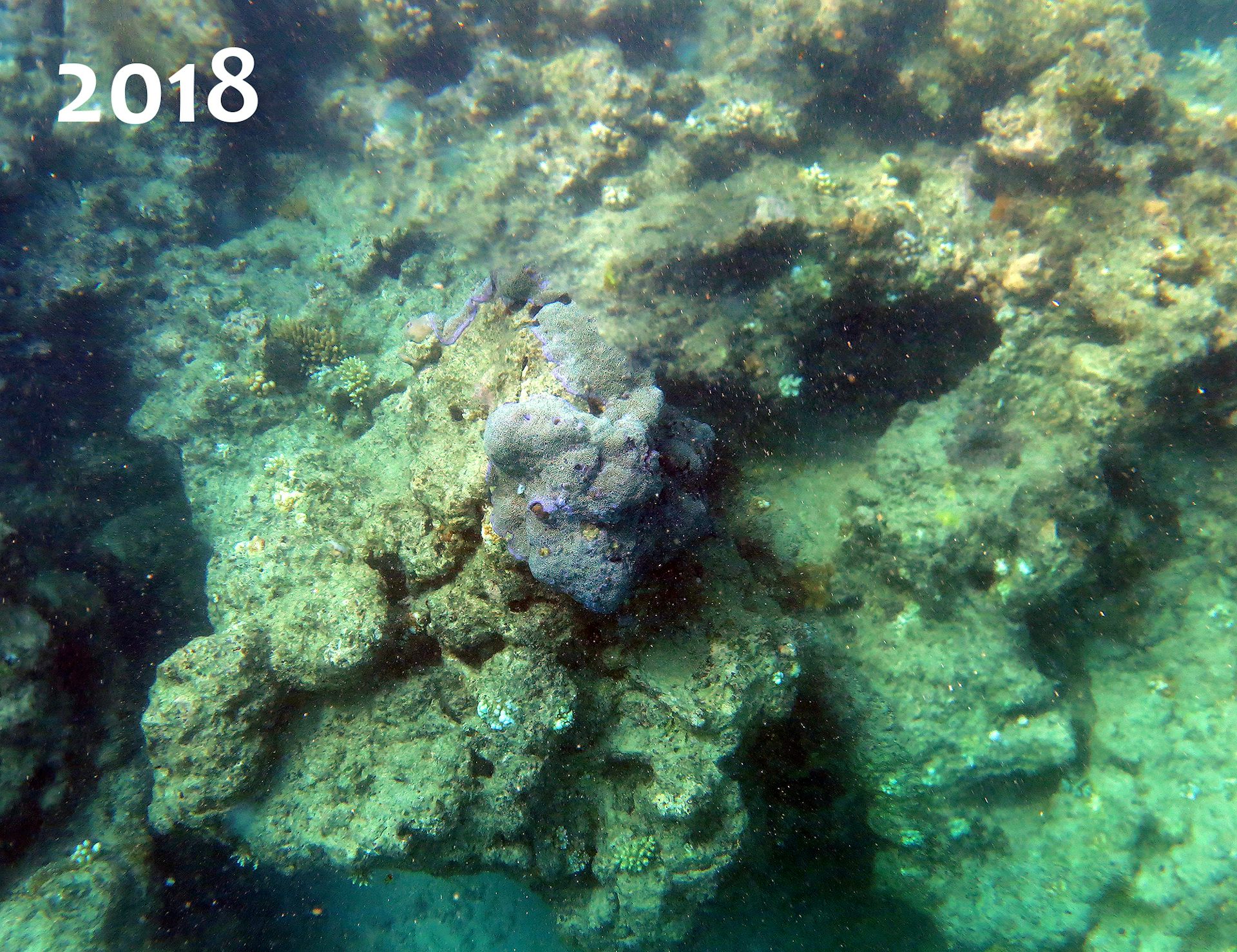
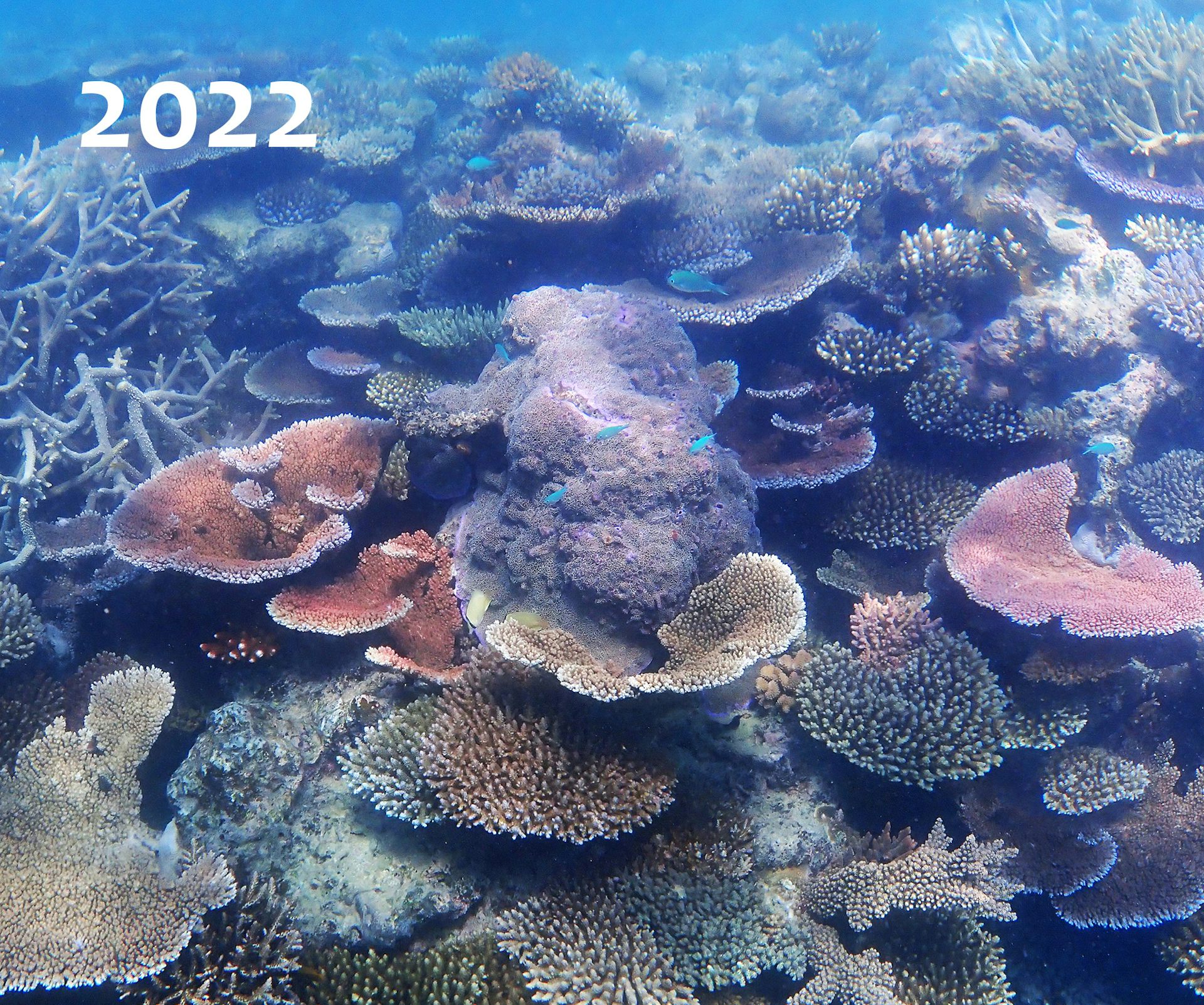
The results
Overall, the long-term monitoring team found coral cover has increased on most reefs. The level of coral cover on reefs near Cape Grenville and Princess Charlotte Bay in the northern sector has bounced back from bleaching, with two reefs having more than 75% cover.
In the central sector, where coral cover has historically been lower than in the north and south, coral cover is now at a region-wide high, at 33%.
The southern sector has a dynamic coral cover record. In the late 1980s coral cover surpassed 40%, before dropping to a region-wide low of 12% in 2011 after Cyclone Hamish.
The region is currently experiencing outbreaks of crown-of-thorns starfish. And yet, coral cover in this area is still relatively high at 34%.
“Mature coral coverage”?
— Terry Hughes (@ProfTerryHughes) August 4, 2022
Rapid increases in cover in parts of the northern and central #GreaBarrierReef since mass coral bleaching in 2016/7 are driven by larval recruitment and fast growth of juvenile weedy corals.
You can’t replace a dead 50 year-old coral in 5 years. https://t.co/bysXqu5dep
Are we being catfished by coral cover?
In the Australian Institute of Marine Science’s report, reef recovery relates solely to an increase in coral cover, so let’s unpack this term.
Coral cover is a broad proxy metric that indicates habitat condition. It’s relatively easy data to collect and report on, and is the most widely used monitoring metric on coral reefs.
The finding of high coral cover may signify a reef in good condition, and an increase in coral cover after disturbance may signify a recovering reef.
But in this instance, it’s more likely the reef is being dominated by only few species, as the report states that branching and plating Acropora species have driven the recovery of coral cover.
Acropora coral are renowned for a “boom and bust” life cycle. After disturbances such as a cyclone, Acropora species function as pioneers. They quickly recruit and colonise bare space, and the laterally growing plate-like species can rapidly cover large areas.
Fast-growing Acropora corals tend to dominate during the early phase of recovery after disturbances such as the recent series of mass bleaching events. However, these same corals are often susceptible to wave damage, disease or coral bleaching and tend to go bust within a few years.
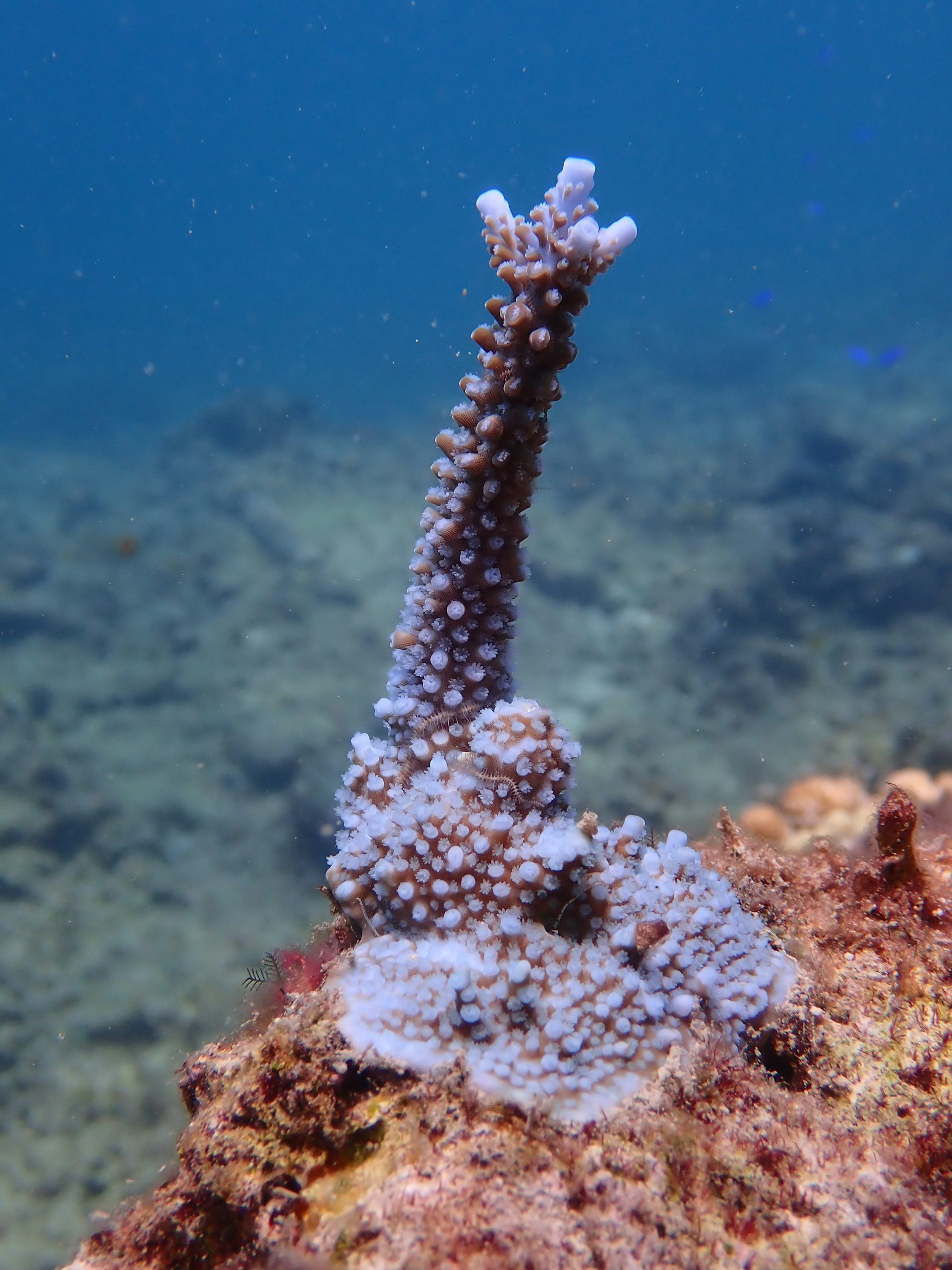
It provides no information about diversity, or the abundance and health of other animals and plants that live in and among the trees, or coral.
Cautious optimism
My study, published last year, examined 44 years of coral distribution records around Jiigurru, Lizard Island, at the northern end of the Great Barrier Reef.
It suggested that 28 of 368 species of hard coral recorded at that location haven’t been seen for at least a decade, and are at risk of local extinction.
Lizard Island is one location where coral cover has rapidly increased since the devastating 2016-17 bleaching event. Yet, there is still a real risk local extinctions of coral species have occurred.
Read more:
Almost 60 coral species around Lizard Island are 'missing' – and a Great Barrier Reef extinction crisis could be next
While there’s no data to prove or disprove it, it’s also probable that extinctions or local declines of coral-affiliated marine life, such as coral-eating fishes, crustaceans and molluscs have also occurred.
Without more information at the level of individual species, it is impossible to understand how much of the Great Barrier Reef has been lost, or recovered, since the last mass bleaching event.
Based on the coral cover data, it’s tempting to be optimistic. But given more frequent and severe heatwaves and cyclones are predicted in the future, it’s wise to be cautious about the reef’s perceived recovery or resilience.
Zoe Richards, Senior Research Fellow, Curtin University
Trumpanzee News - More on the Dangerous Legacy of Donald J Trump
Friday, 5 August 2022
I hate to Say it, But I told You So!
Back in mid-July when the SCOTUS decision overturning Roe vs Wade was announced, I said it looked like a Pyrrhic victory for the forces of American Christo-fascism and a wake-up call for the forces of democracy, human rights, and female bodily autonomy, as about two thirds of American adults supported the right of women to choose and were in favour of decriminalised abortions.
Now the stunning victory for the pro-choice cause in Kansas, that most conservative of states which has voted Republican in every election since the mid-1960s, vindicates everything I said in that article - SCOTUS now represents only a small, vociferous minority of Americans to whom Donald Trump effectively handed control of the US judiciary by stuffing the Supreme Court with fundamentalist Christo-fascists.
According to this article in The Daily Yonder, the result is even more impressive when analysed in detail. Although the rural parts of Kansas voted 'Yes' (to allow the prohibition of abortions in the state) by 58% to 42%, the swing away from the pro-Trump vote in the same areas was about 17%. Across the state, the result was 58% to 42% against the proposal in a state which voted 56% to 42% for Trump and against Biden. The pro-abortion position was even more popular than Biden, showing that what was thought to be a core Republican issue is in fact a major vote loser for them.
On Abortion Referendum, Kansas Rural Voters Shifted Further from 2020 Presidential Results
by Tim Marema and Bill Bishop, The Daily Yonder
August 4, 2022
Kansas voters in small cities and rural areas swung further from the Republican Party vote just two years ago than their more urban counterparts in Tuesday’s defeat of an anti-abortion state constitutional amendment.
Statewide, the amendment, which would have removed abortion rights from the Kansas Constitution, failed by about 16 percentage points, 42% to 58%.
Voters in large and medium-sized metropolitan areas defeated the amendment 2 to 1. Voters in small metropolitan areas split evenly over the amendment. And rural (nonmetropolitan) voters favored the anti-abortion amendment 58% to 42%.
But the bottom-line vote is only part of the picture. Another story arises from how much the anti-abortion amendment underperformed compared to Republican Donald Trump in the 2020 presidential election. And by that measure, Kansas’ small-city and rural voters shifted further away from the Republican Party than voters in bigger cities.
Republican Trump won Kansas by 14 points, 56% to 42% in the 2020 presidential election. (The total percent is less than 100 because it doesn’t include third-party candidates.)
The anti-abortion constitutional amendment was thought to be a bedrock Republican issue. The Kansas party initiated the referendum and scheduled it for the August primary, as opposed to the November general election, thinking a highly motivated base would make up a larger proportion of the turn out and get the amendment passed.
The strategy didn’t work. Turnout was extremely high – double the last midterm election. The anti-abortion vote shifted 30 points away from the support Trump received in 2020. And the amendment failed.
Across the state, the pro-abortion vote outperformed Biden’s vote in 2020. In other words, the issue of abortion rights was far more popular than the Democratic candidate.
And the anti-abortion amendment was far less popular than the Republican presidential candidate.
Small metropolitan and rural areas had the greatest shift away from the 2020 Republican vote. The pro-abortion rights vote was about 19 points more popular than Biden in 2020 in these smaller communities (see graph above). And the anti-abortion vote was about 17 points less popular than Trump (see graph at the top of the story).
From this data, we may be able to draw a couple conclusions. One is that politicians can’t assume small-city and rural voters are in lock-step behind banning abortion. And, two, voters behave differently when they have the chance to vote straight issues without party labels. The proposed constitutional amendment was nonpartisan.
One caveat is that turnout affects elections. The high turnout means there were likely some different types of voters than the ones who typically go to the polls for a relatively low-key midterm primary.
The abortion vote in Kansas will certainly inform party strategy in the general election in November. Democrats are concluding that the Kansas vote means they should be campaigning more on abortion rights. And others think the Supreme Court’s dismantling of Roe v. Wade may motivate a different type of turnout in the November election to blunt some of the Republican momentum in congressional elections.
This data tells us that the vote in small cities and rural areas is also up for grabs.
This article first appeared on The Daily Yonder and is republished here under a Creative Commons license.
Americans now need to follow up this magnificent victory for secular, human rights values, in the mid-terms with a similar vote for Democrats and against the largely pro-life, (read, anti-choice), minority opinion the Repugnican Party now represents.
American women, supported by fair-minded American men, can take back control of their bodies from the extremist Christian minority that SCOTUS handed it to.
Thursday, 4 August 2022
Malevolent Designer News - How Creationism's Favourite Sadist is Making a Fungus Better at Harming Us.

Creationist mode: 
Something you can almost bet your house on is that, if there is a way to make sick people sicker or suffer more, Creationism's intelligent [sic] designer will find a way to do it. It will then take on the challenge of making sure it's design can continue to do its work despite the efforts of medical science to combat it with drugs to cure us of infections or to prevent us getting them.
An obvious case in point is the way it keeps redesigning the SARS-CoV-2 virus that causes COVID-19 to make it more infectious and/or help it evade any immunity we may have got from previous infections or medical science's vaccines. Another example is the growing number of dangerous bacterial pathogens that are becoming antibiotic resistant.
Yet another example is the subject of this paper by scientists from Duke University in the USA and Ruhr-Universität Bochum (RUB), Germany who have shown how a pathogenic fungus, Cryptococcus neoformans has developed resistance to the antibiotics of choice used to treat patients infected with it.
The news release from RUB explains the problem:
Tuesday, 2 August 2022
Evolution News - An Entire Bacterial Genome Integrated Into the Genome of a Fruit Fly
The fruit fly, Drosophila ananassae, is not just an ordinary fruit fly. In fact it's not just a fruit fly. It is actually a hybrid but not even a bog-standard hybrid between related species. It is actually a hybrid between two entirely different organisms. It is a hybrid between a fruit fly and a bacterium. This fusion of genomes is believed to have happened about 8,000 years ago.
So, if anything was designed to challenge the childish creationist notion of 'kinds' it is this biological peculiarity, because it is not a fruit fly and it's not a bacterium. It's Drosophila ananassae.
Biologically, there is no real mystery here because horizontal gene transfer has been known to science for several decades and the bacterium involved, Wolbachia is a common endoparasite or endosymbiont in many insects. Some insects have even come to depend on it for some functions, such as reproduction in the tsetse fly, resistance to some viruses and avoiding being parasitised by parasitoid wasps.
But what is unusual is for an entire genome, from what was presumably an endosymbiont, to be transferred to the host genome. The scientists from the University of Maryland who made this discovery have published their findings, open access, in the journal Cell Biology. The press release from the University of Maryland explains the research and its significance:
Covidiot News - Trump's Legacy: More Americans Now Think it is Right to Harass and Threaten Public Health Officials and Scientists

One of the more enduring and insidious legacies of the disastrous single-term US president, Donald J. Trump, is that distrusting public Health Officials who tried to explain the science behind the COVID-19 pandemic and the measures to mitigate it, and by extension, all scientists, to the extent of harassing them, attacking them, and even making death threats against them when they deliver unwelcome news, has now become acceptable to a significant proportion of American adults.
That proportion appears to be growing according to an investigation by scientists from Johns Hopkins Bloomberg School of Public Health, Baltimore, Maryland, USA, the University of Colorado, Aurora, Colorado, USA, the Weill Cornell Medical College, New York, New York, USA and the Cornell Jeb E. Brooks School of Public Policy, Ithaca, New York, USA. Their findings are published open access in the online Journal of the American Medical Association (JAMA) Open Network.
Their key findings were:
Key PointsThey give more detail in the abstract to their paper:
Question What factors shape US adults’ beliefs regarding whether threatening or harassing public health officials was justified during the COVID-19 pandemic?
Findings In this survey study of 1086 US adults, the share who believed that harassing or threatening public health officials because of business closures was justified rose from 20% to 25% and 15% to 21%, respectively, from November 2020 to July and August 2021. There were increases in negative views over time among higher earners, political independents, those with more education, and those most trusting of science.
Meaning These findings suggest that restoring trust in public health officials will require strategies tailored to engage diverse viewpoints.
Monday, 1 August 2022
Endemic US Racism News - Black and Hispanic Areas of USA Were Less Likely to Get COVID Vaccine Supplies
Figures provided a few days ago by investigators from the University of California San Diego, show that health care facilities serving underrepresented, rural and hardest-hit communities in the USA were less likely to administer COVID-19 vaccines in the early phase of the vaccine rollout and that the reason could well have been the lower availability of sites having vaccines to administer, rather than vaccine hesitancy or distrust, as has previously been suggested.
In particular, there were significantly fewer vaccination facilities in rural counties that were predominantly black or Hispanic and even where the mortality figures for COVID-19 were highest.
As the UC San Diego press release explains:
When reports showed COVID-19 vaccination rates were lower among racial/ethnic minority groups, most discussions focused on mistrust and misinformation among these populations or their reduced access to health care facilities. But new research from University of California San Diego and collaborating institutions has identified an additional barrier to equity: whether or not each health care facility actually received and administered vaccines.The following charts show the researchers' findings (click the buttons for greater clarity):
[…]
In a study published July 28, 2022 in PLOS Medicine, researchers demonstrated that health care facilities serving underrepresented, rural and hardest-hit communities were less likely to administer COVID-19 vaccines in the early phase of the vaccine rollout.
Led by Inmaculada Hernandez, PharmD, PhD, associate professor of clinical pharmacy at Skaggs School of Pharmacy and Pharmaceutical Sciences at University of California San Diego, the study is the first to quantify disparities in the early distribution of COVID-19 vaccines to health care facilities across the country.
Previous studies of vaccine accessibility have not distinguished whether lower access in underserved neighborhoods was a product of the lower concentration of health care facilities in these areas or of inequities in the distribution of COVID-19 vaccines to each health care facility.
To answer this question, Hernandez and colleagues tested whether the likelihood of an eligible health care facility administering COVID-19 vaccines varied based on the racial/ethnic composition and urbanicity of the local county. The team focused on the initial phase of vaccine rollout, using data from May 2021 when states were officially required to make vaccines available to the public.
At that time, 61 percent of eligible health care facilities and 76 percent of eligible pharmacies across the U.S. provided COVID-19 vaccinations. When researchers began comparing these rates with the socioeconomic features of the county each facility was located in, several patterns emerged.
Facilities in counties with a high proportion of Black people were less likely to serve as COVID-19 vaccine administration locations compared to facilities in counties with a low proportion of Black people. This was particularly the case in metropolitan areas, where facilities in urban counties with large Black populations had 32 percent lower odds of administering vaccines compared to facilities in urban counties with small Black populations.Both the national policy and public opinion agreed that vaccine distribution should prioritize disadvantaged communities and those hit hardest by COVID-19, but the data shows that is not what happened.
Dr Inmaculada Hernandez, PharmD, PhD, lead author
Associate professor of clinical pharmacy
Skaggs School of Pharmacy and Pharmaceutical Sciences
University of California San Diego, San Diego, CA, USA
Facilities in rural counties and in counties hardest hit by COVID-19 were also associated with decreased odds of serving as a COVID-19 vaccine administration location. In rural counties with a high proportion of Hispanic people, facilities had 26 percent lower odds of administering vaccines compared to facilities in rural counties with a low proportion of Hispanic people.To achieve health equity in future public health programs, including the distribution of booster shots, it is crucial that public health authorities review these early COVID-19 distribution plans to understand how and why this happened.
Dr Jingchuan (Serena) Guo, MD, PhD, senior author
Assistant professor
University of Florida, FL, USA
Further research is necessary to identify the reasons why vaccines were not equitably distributed to all health care facilities and how the involvement of these facilities evolved across subsequent phases of vaccine distribution, the authors said.

The figure shows the results of logistic regression models fitted with generalized estimating equations for the primary outcome of a healthcare facility (or a pharmacy) serving as a COVID-19 vaccine administration location. The model only included main effects. All healthcare facilities included pharmacies, FQHCs, RHCs, and HODs. The circles represent the point estimate for the odds ratio, and the whiskers represent the 95% confidence interval. COVID-19, Coronavirus Disease 2019; FQHC, federally qualified health center; HOD, hospital outpatient department; RHC, rural health clinic.

The figure shows the results of logistic regression models fitted with generalized estimating equations for the primary outcome of a healthcare facility (or a pharmacy) serving as a COVID-19 vaccine administration location. All healthcare facilities included pharmacies, FQHCs, RHCs, and HODs. The model adjusted for all covariates listed in Fig 1. Additionally, the model constructed for all healthcare facilities included an indicator variable for facility type (pharmacy vs. others). The circles represent the point estimate for the odds ratio, and the whiskers represent the 95% confidence interval. COVID-19, Coronavirus Disease 2019; FQHC, federally qualified health center; HOD, hospital outpatient department; RHC, rural health clinic.

The figure shows the results of logistic regression models fitted with generalized estimating equations for the primary outcome of a healthcare facility (or a pharmacy) serving as a COVID-19 vaccine administration location. All healthcare facilities included pharmacies, FQHCs, RHCs, and HODs. The model adjusted for all covariates listed in Fig 1. Additionally, the model constructed for all healthcare facilities included an indicator variable for facility type (pharmacy vs. others). The circles represent the point estimate for the odds ratio, and the whiskers represent the 95% confidence interval. COVID-19, Coronavirus Disease 2019; FQHC, federally qualified health center; HOD, hospital outpatient department; RHC, rural health clinic.
AbstractFrom these figures it is clear that there was a differential in the availability of vaccines between the wealthier, white and less deprived areas of the USA and the predominantly black, deprived areas and that even differences in mortality rates did not reverse that trend. It is also clear that there was a differential based on voting patterns in the 2020 presidential elections.
Background
The US Centers for Disease Control and Prevention has repeatedly called for Coronavirus Disease 2019 (COVID-19) vaccine equity. The objective our study was to measure equity in the early distribution of COVID-19 vaccines to healthcare facilities across the US. Specifically, we tested whether the likelihood of a healthcare facility administering COVID-19 vaccines in May 2021 differed by county-level racial composition and degree of urbanicity.
Methods and findings
The outcome was whether an eligible vaccination facility actually administered COVID-19 vaccines as of May 2021, and was defined by spatially matching locations of eligible and actual COVID-19 vaccine administration locations. The outcome was regressed against county-level measures for racial/ethnic composition, urbanicity, income, social vulnerability index, COVID-19 mortality, 2020 election results, and availability of nontraditional vaccination locations using generalized estimating equations.
Across the US, 61.4% of eligible healthcare facilities and 76.0% of eligible pharmacies provided COVID-19 vaccinations as of May 2021. Facilities in counties with >42.2% non-Hispanic Black population (i.e., > 95th county percentile of Black race composition) were less likely to serve as COVID-19 vaccine administration locations compared to facilities in counties with >12.5% non-Hispanic Black population (i.e., lower than US average), with OR 0.83; 95% CI, 0.70 to 0.98, p = 0.030. Location of a facility in a rural county (OR 0.82; 95% CI, 0.75 to 0.90, p < 0.001, versus metropolitan county) or in a county in the top quintile of COVID-19 mortality (OR 0.83; 95% CI, 0.75 to 0.93, p = 0.001, versus bottom 4 quintiles) was associated with decreased odds of serving as a COVID-19 vaccine administration location.
There was a significant interaction of urbanicity and racial/ethnic composition: In metropolitan counties, facilities in counties with >42.2% non-Hispanic Black population (i.e., >95th county percentile of Black race composition) had 32% (95% CI 14% to 47%, p = 0.001) lower odds of serving as COVID administration facility compared to facilities in counties with below US average Black population. This association between Black composition and odds of a facility serving as vaccine administration facility was not observed in rural or suburban counties. In rural counties, facilities in counties with above US average Hispanic population had 26% (95% CI 11% to 38%, p = 0.002) lower odds of serving as vaccine administration facility compared to facilities in counties with below US average Hispanic population. This association between Hispanic ethnicity and odds of a facility serving as vaccine administration facility was not observed in metropolitan or suburban counties.
Our analyses did not include nontraditional vaccination sites and are based on data as of May 2021, thus they represent the early distribution of COVID-19 vaccines. Our results based on this cross-sectional analysis may not be generalizable to later phases of the COVID-19 vaccine distribution process.
Conclusions
Healthcare facilities in counties with higher Black composition, in rural areas, and in hardest-hit communities were less likely to serve as COVID-19 vaccine administration locations in May 2021. The lower uptake of COVID-19 vaccinations among minority populations and rural areas has been attributed to vaccine hesitancy; however, decreased access to vaccination sites may be an additional overlooked barrier.
Author summary
Why was this study done?
What did the researchers do and find?
- Equity in the distribution of Coronavirus Disease 2019 (COVID-19) vaccine is of major relevance.
- It is unknown whether there were differences in the distribution of COVID-19 vaccines to healthcare facilities depending on the demographic composition of the population.
What do these findings mean?
- We tested whether healthcare facilities serving minority or disadvantaged neighborhoods were less likely to administer COVID-19 vaccines in the early phase of the COVID-19 vaccine rollout process.
- We found that healthcare facilities in counties with higher Black composition, in rural areas, and in hardest-hit communities were less likely to administer COVID-19 vaccines in May 2021.
- There were disparities in the early distribution of COVID-19 vaccines to healthcare facilities across the country.
Hernandez I, Dickson S, Tang S, Gabriel N, Berenbrok LA, Guo J (2022)
Disparities in distribution of COVID-19 vaccines across US counties: A geographic information system–based cross-sectional study.
PLoS Med 19(7): e1004069. DOI: 10.1371/journal.pmed.1004069
Copyright: © 2022 The authors.
Published by PLoS. Open access
Reprinted under a Creative Commons Attribution 4.0 International license (CC BY 4.0)
More research is now needed to determine whether this was due to political/racial prejudice on behalf of the suppliers or on behalf of the local authorities responsible for requesting supplies of the vaccine and providing facilities for their administration, and to what extent Donald Trump's disastrous lead in downplaying the seriousness of the pandemic to cover for his own incompetence, played a part in this disparity.
But, whatever the cause, it is clear that, in the early phase of the vaccine roll-out, there was not equitable distribution of the vaccines and that racial minorities and people in deprived areas of the USA and in Trump-supporting counties were least likely to get them.
Evolution News - A Beautiful Example of Co-Evolution
The explanatory power of the Theory of Evolution was demonstrated yet again recently, when five biologists from Japan published a paper in the journal Ecology in which they explained what had been a mystery in the form of a peculiarly shaped orchid flower, the so-called white egret orchid, Habenaria radiata syn. Pecteilis radiata, or sagisō, native to China, Korea and Japan, which has a superficial resemblance to a flying Egret.
The mystery had been the reason for the bizarre, jagged edge to two of the three petals of the flower. Orchids are well known for their adaptation to pollination by specific species of insects, notably bees and moths and for their part in co-evolutionary, co-dependent relationships, often with a single species.







